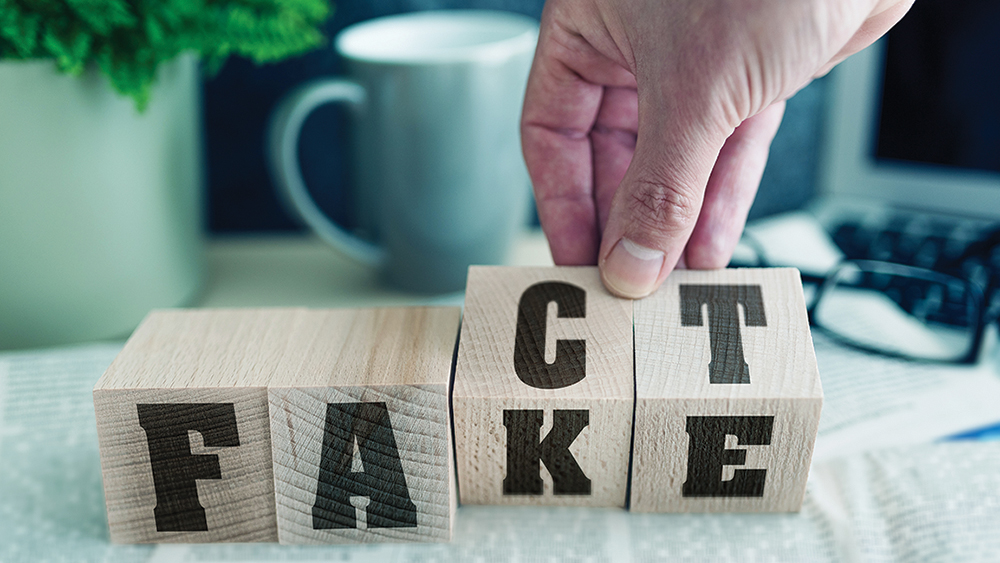The Rising Tide of Disinformation: Navigating the Murky Waters of Online News
In the digital age, information flows freely and instantaneously, offering unprecedented access to news and perspectives from across the globe. Social media platforms, news websites, and messaging apps serve as conduits for this constant stream of information, connecting billions and shaping public discourse. However, this interconnectedness has also facilitated the rapid proliferation of disinformation, often referred to as "fake news," posing a significant challenge to informed decision-making and societal cohesion. Recent research indicates that far-right populist movements are particularly prone to disseminating fake news, utilizing it as a strategic tool to advance their agenda. With the lines blurring between credible reporting and fabricated narratives, developing skills to discern truth from falsehood becomes paramount.
Combating disinformation requires a clear understanding of its various forms and motivations. Disinformation, distinct from misinformation which is unintentionally false, is deliberately crafted to deceive and manipulate. It can manifest as fabricated reports, manipulated images, misleading headlines, or AI-generated content designed to sow discord, influence political outcomes, or simply generate profit through clicks and shares. The 2020 COVID-19 pandemic provided fertile ground for disinformation, with conspiracy theories about 5G towers causing the virus leading to real-world consequences like the vandalism of telecommunications infrastructure. Recognizing that disinformation often preys on pre-existing biases and emotional vulnerabilities is crucial to developing a discerning eye. One tends to readily accept information that aligns with their worldview, while dismissing contradictory evidence, a phenomenon known as confirmation bias. Disinformation campaigns often exploit this by creating narratives that reinforce existing beliefs.
Developing critical thinking skills is essential for navigating the information landscape. Questioning the source of information is the first line of defense. Established news organizations, with their editorial standards, fact-checking processes, and legal accountability, are generally more reliable than unverified websites or social media accounts. Examine the website’s URL, the author’s credentials, and the overall presentation for any suspicious signs. Outdated or out-of-context information can also be misleading. Sensationalized stories lacking supporting evidence should be treated with skepticism. Verifying information with trusted sources and fact-checking websites like Full Fact, FactCheck.org, Reuters Fact Check, and Snopes is a prudent practice.
Social media algorithms further complicate the issue. Platforms like TikTok, X (formerly Twitter), and Facebook prioritize content that generates engagement, often inadvertently amplifying sensationalized and misleading information. Users contribute to this cycle by interacting with emotionally charged content, even if it’s based on false premises. To curate a more informative feed, refrain from engaging with content solely based on emotional reactions. Instead, prioritize critical evaluation and engage with credible sources.
Personal responsibility extends to our interactions within social networks. Addressing the spread of disinformation within family and friend groups requires tact and open communication. Encourage loved ones to question the sources they share and to avoid disseminating unverified information. This involves fostering a culture of critical thinking and media literacy within our immediate circles.
Combating disinformation requires a multi-pronged approach. Educating others, particularly older generations who might be less familiar with online information dynamics, equips them with the necessary tools to navigate the digital world safely. Sharing fact-checking resources and promoting critical thinking skills can help stem the tide of disinformation within communities.
Practical Steps for Identifying Disinformation:
-
Know the difference: Understand the distinction between misinformation (false but unintentional) and disinformation (deliberately false and misleading).
-
Scrutinize the source: Evaluate the credibility of websites, social media accounts, and authors. Look for established news organizations with editorial standards and fact-checking procedures.
-
Check the context: Verify the date and relevance of information. Be wary of old stories reused or taken out of context.
-
Demand evidence: Look for verifiable sources, data, quotes, and supporting information. Treat sensational claims lacking evidence with caution.
-
Utilize fact-checking websites: Cross-reference information with reputable fact-checking organizations like Full Fact, FactCheck.org, Reuters Fact Check, and Snopes.
-
Beware of confirmation bias: Recognize the tendency to accept information that aligns with your existing beliefs and challenge yourself to consider alternative perspectives.
-
Verify before sharing: Don’t contribute to the spread of disinformation. Confirm the accuracy of information before sharing it with others.
- Educate others: Share these tips with friends and family to promote media literacy and critical thinking.
By adopting a proactive and critical approach to information consumption, individuals can protect themselves and their communities from the harmful effects of disinformation. Cultivating media literacy is a shared responsibility, requiring collective effort to foster a more informed and resilient society.


